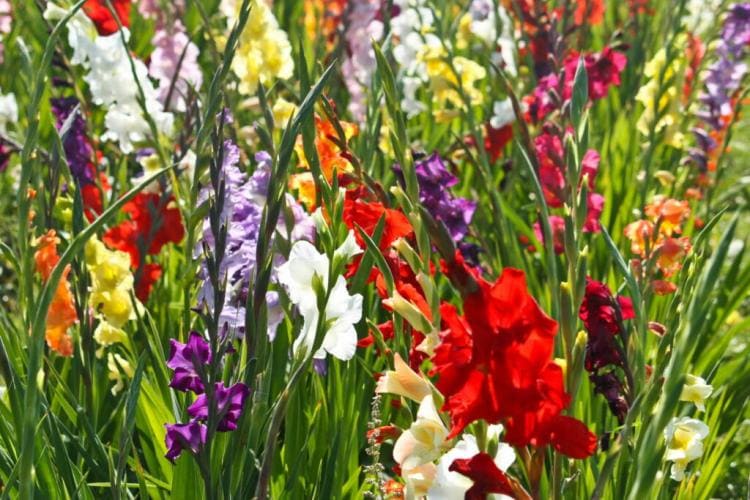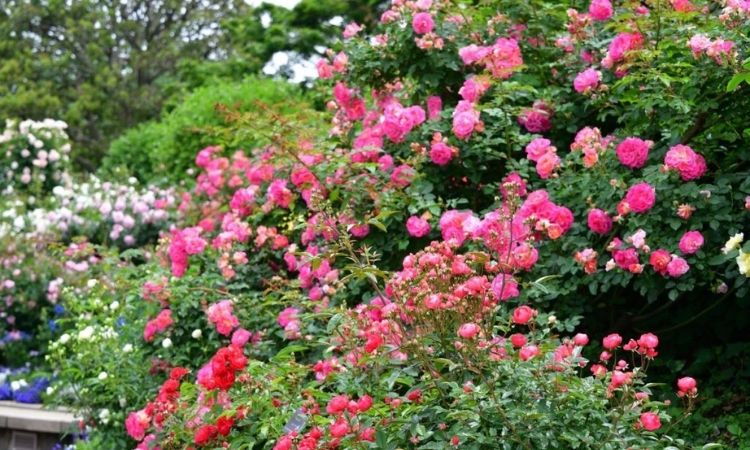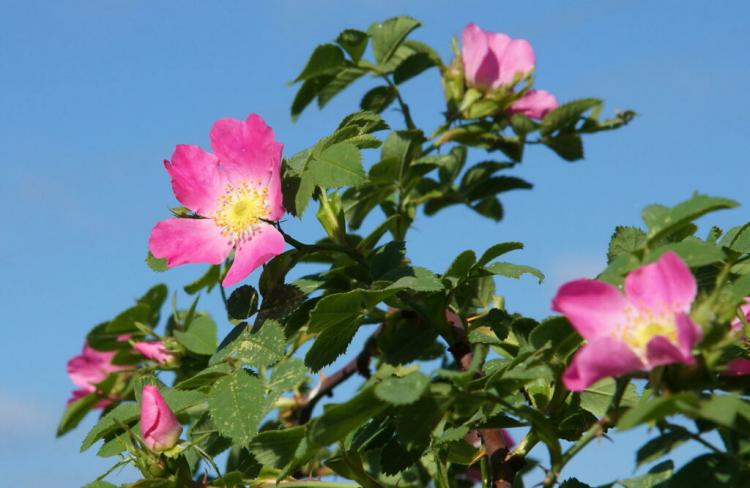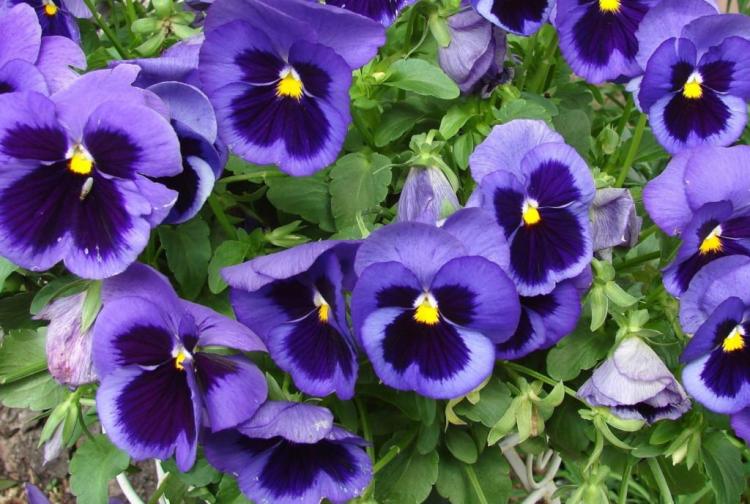Gladiolus: Helpful Tips For Planting, Cutting And Caring For
Gladioli – also known as sword flower – are a real eye-catcher in the vase as well as in the garden. We have valuable tips about the gladiolus.
Gladiolus (Gladiolus) is a real eye-catcher in the summer and appears in the most unusual colors. The colorful garden gladioli ( Gladiolus x hortulanus ) are particularly popular as gladioli grown in this country.
A special feature of the unusual flower in its natural environment is that it survives in the ground as a tuber and sprouts again from year to year. Getting the cold-sensitive gladiolus through the winter, however, requires the right care. We show you how to get your own gladioli in the garden and how to properly care for them.
Gladioli: distribution and flowering period
Table of Contents
Gladioli are often planted in Germany, but their original home is in warmer climes. The plant is native to around 250 species between the Mediterranean and southern Africa and occurs in a wide variety of colors. The plants are known for their showy and beautiful flowers, which appear at different times depending on the type and variety. The flowering time of early-flowering gladioli is in June, with late-flowering specimens the plant can take until September.
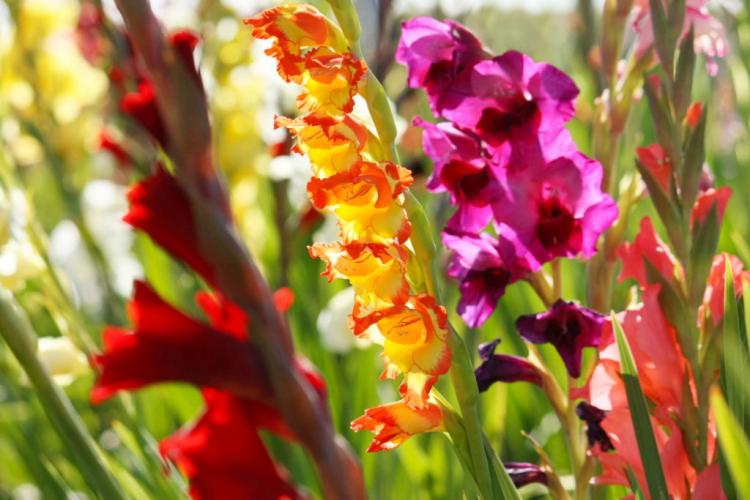
Are gladioli poisonous?
Given the striking appearance, many people wonder whether the gladiolus is not even poisonous. In fact, the plant is non-toxic in all parts and can even be partially consumed. The young flowers in particular are considered to be particularly aromatic.
Plant gladioli
With the warmth-loving gladioli, a few pointers are required so that the planting goes well. We show you what you have to pay attention to.
When to plant gladioli
Gladioli are extremely sensitive to the cold and cannot be planted in the garden until April at the earliest. In rougher areas, you should generally only start planting from May to June to avoid the last frosts. In very mild regions, however, gladioli can also be planted in autumn so that they sprout in the following spring.
How deep to plant gladioli?
The correct planting depth is important for a quick start of growth, so never plant the bulbs of the gladiolus too deep. In general, the top part of the bulb should always look out of the ground when planting; a planting depth of 10 to 15 cm has proven itself. When planting, it is always important that the larger part of the bulb is at the bottom, as this is where the roots form.
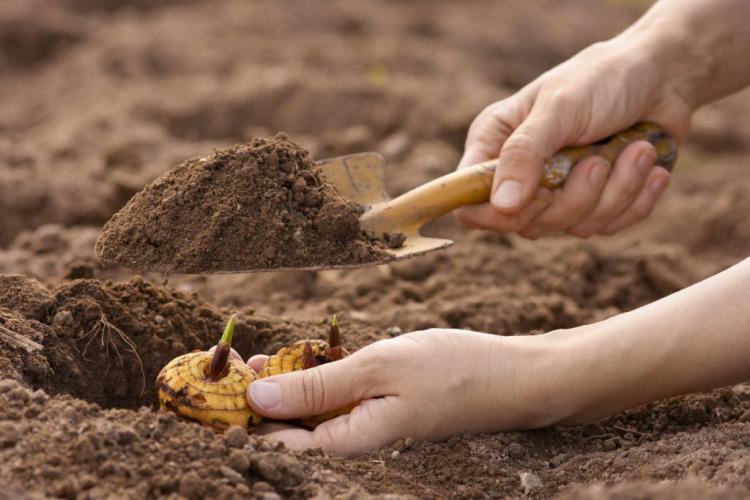
Here are a few things to keep in mind when planting gladioli:
- Planting time in rough areas May – June
- In mild areas either autumn or from April
- Planting depth 10 – 15 cm; Point must look out of the earth
Are gladioli hardy?
Due to their warm place of origin, the majority of gladiolus species and varieties are not adapted to withstand ground frost in winter. The frost in this country would damage the onions so badly that they would unfortunately no longer grow back. You can find out more about the overwintering of gladioli here.
Dig up gladioli again in autumn/winter
While it would be easier to leave the bulbs in the ground through the winter, the only option is digging them up so that they sprout and bloom again the following year. First cut off the withered leaves a little above the roots and carefully dig up the bulbs before the first frosts in autumn. The onions should be stored in a cool, but frost-free and dry place. Temperatures above 15 ° C should be avoided at all costs to prevent them from sprouting too early.
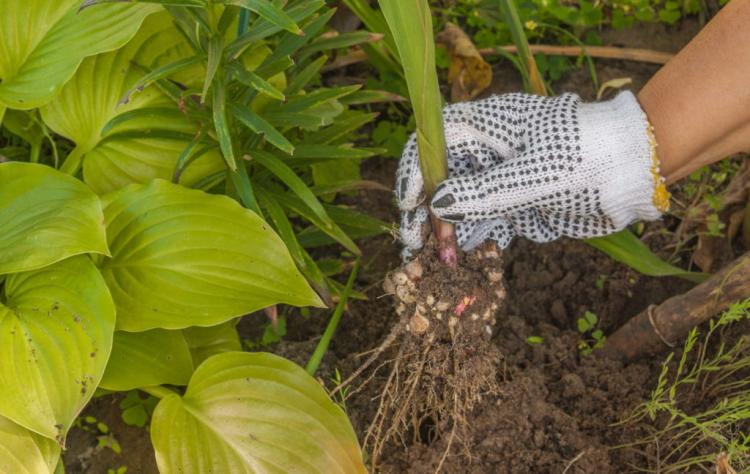
Caring for gladioli
Overall, the care required for gladioli is manageable and limited to regular watering and a few other measures. We present what else you should consider when caring for gladioli.
You might so like: Hibiscus Plants: Expert tips for location & propagation
Water and fertilize gladioli
Always water gladioli as needed. Depending on the heat, the water requirement can be quite high. Daily watering is worthwhile in midsummer, as the soil dries out quickly. Always make sure not to completely flood the soil with water, as the attractive plant does not tolerate waterlogging well. For optimal growth, the supply of sufficient nutrients is also useful. Before planting the onions, work a good amount of compost or primarily organic fertilizer into the soil.
Cut gladioli: remove wilted flowers and leaves
When cutting the gladiolus, the following applies first wait until the flowers and flower stalks have completely withered before using the scissors. In principle, do not cut off the entire green of the plant before autumn so that it can still store energy in the bulb. The entire stems and leaves can be cut back for wintering before the first frosts.
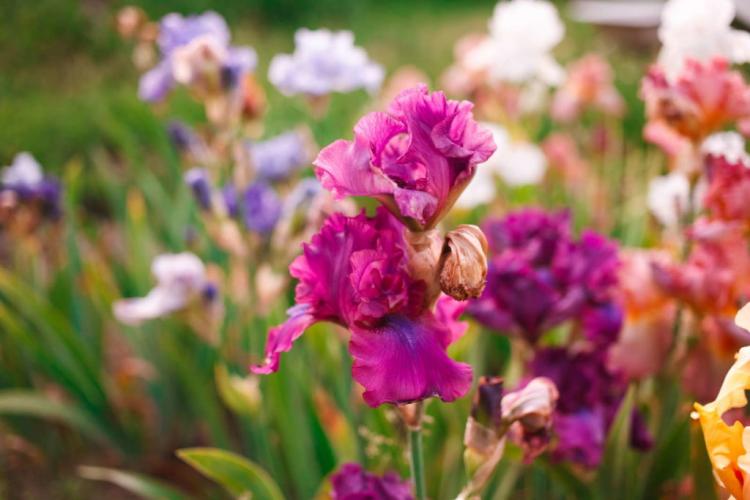
When caring for gladioli, pay attention to the following aspects:
- Water as needed, do not let the soil dry out completely
- Do not water excessively
- Mix in compost as fertilizer before planting
- Only cut when the flower stalks have faded and withered
Gladiolus in the vase
In addition to cutting the plants after flowering, gladioli are often cut as cut flowers. We show what you should look out for if the gladiolus is to be on the table as a decorative flower.
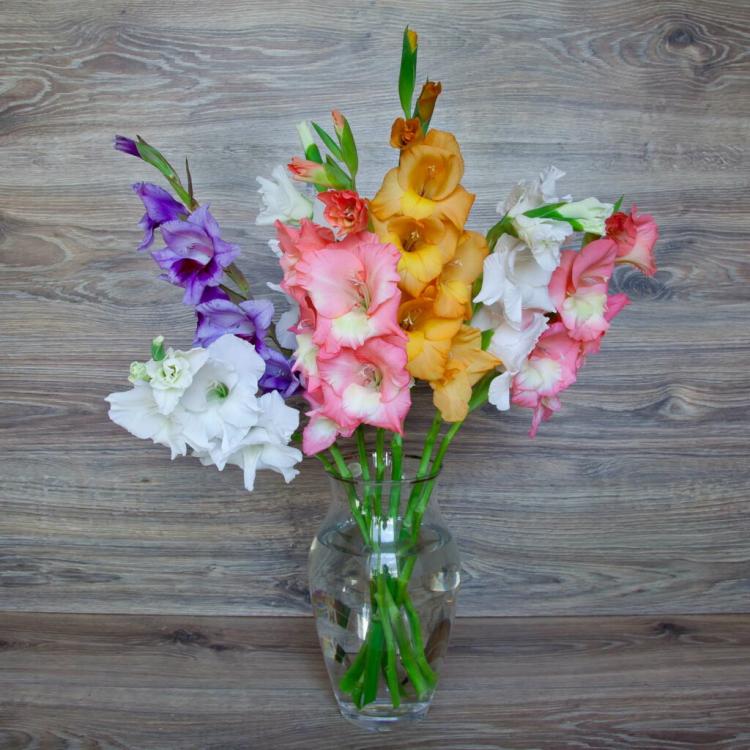
Cut gladioli for the vase
Gladioli should always be cut when not all of the flowers on the stem are open. In this way, you can enjoy the abundance of flowers for a few more days. Gladioli are ideally cut in the morning as cut flowers and never remove all flower stalks from a plant.
Maintain gladioli in the vase
For the gladioli to last as long as possible, the freshly cut flowers should always be placed in a vase with water immediately. Every few days, cut the stems at the bottom and change the water from time to time to extend the life of the flowers. In addition, it has proven to be useful to cap bloomed flowers so that blooms on top also open.
